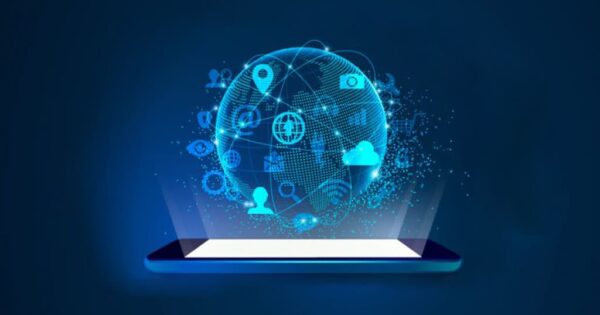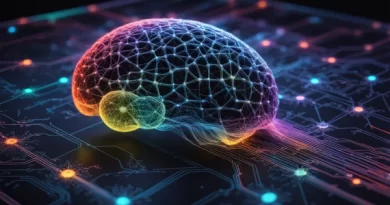Exploring the Internet of Behavior (IoB): A New Era in Tech Innovation
As technology continues to evolve at a breakneck pace, a groundbreaking concept is emerging that could redefine how we interact with the digital world: the Internet of Behavior (IoB). Unlike the Internet of Things (IoT), which connects devices, the IoB focuses on connecting and understanding human behaviors. By merging psychology, data analytics, and advanced technology, the IoB aims to monitor, analyze, and influence human actions, preferences, and emotions in ways that could transform our daily lives.
What Exactly is the Internet of Behavior?
The Internet of Behavior is an extension of IoT, but with a twist—it’s all about human behavior. By gathering and analyzing data from IoT devices, social media activity, online habits, and even physical actions tracked through sensors, the IoB seeks to uncover the reasons behind our choices and how these can be influenced.
Picture a world where your smart home doesn’t just know your routine but also anticipates your needs, adjusting the environment to suit your mood or even suggesting activities to enhance your well-being. Or imagine a fitness app that not only tracks your workouts but also adapts its recommendations based on your motivational levels and lifestyle habits. This is the vision of the IoB—turning raw data into deep, actionable insights that can improve our lives in meaningful ways.
Key Components of IoB:
The Internet of Behavior is built on several essential elements:
- Data Acquisition: IoB starts with the vast amounts of data generated by IoT devices, online interactions, and social platforms. Every action you take online contributes to this data pool, creating a detailed behavioral profile.
- Behavioral Insights: Advanced data analytics, powered by AI and machine learning, dig into this data to identify patterns, trends, and preferences. Unlike traditional analytics, IoB dives into the psychological drivers behind these behaviors.
- Customization: The insights derived from behavioral analysis enable a new level of personalization. From targeted advertising to customized health recommendations, the IoB allows for tailored experiences that align with individual behaviors.
- Behavioral Influence: The ultimate aim of IoB is to positively influence behavior. This could mean encouraging healthier choices, promoting eco-friendly habits, or even enhancing productivity by understanding and addressing behavioral triggers.

Real-World Applications of IoB:
The potential uses of IoB are vast and touch on various aspects of our lives:
- Healthcare Personalization: IoB can revolutionize healthcare by providing personalized care based on individual behavior. Wearable devices that monitor daily activities can help healthcare providers offer advice and interventions tailored to each person’s unique needs.
- Retail Customization: In retail, IoB can enhance the shopping experience by analyzing customer behavior to provide personalized recommendations, promotions, and store layouts that resonate with individual preferences.
- Workplace Efficiency: IoB can be applied in the workplace to improve productivity. By analyzing employee behavior, companies can identify factors that lead to stress or inefficiency and make adjustments to create a better work environment.
- Public Policy and Safety: Governments can leverage IoB to monitor and influence public behavior, whether it’s encouraging compliance with safety regulations or promoting public health initiatives through targeted campaigns.
Ethical Challenges:
While the Internet of Behavior offers exciting possibilities, it also raises significant ethical concerns. Privacy is a major issue, as the line between helpful personalization and invasive surveillance can become blurred. Additionally, there is the potential for behavioral manipulation, where individuals might be subtly guided to make decisions that serve corporate or governmental interests rather than their own.
Addressing these ethical challenges requires clear guidelines and regulations that prioritize transparency, consent, and data security. It’s essential to strike a balance between harnessing the power of IoB and protecting individual rights and freedoms.
Looking Ahead: The Future of IoB
The Internet of Behavior is still in its infancy, but its potential is vast. As technology advances, IoB is likely to play an increasingly pivotal role in shaping both our digital and physical environments. By understanding and influencing behavior, IoB could lead to more personalized, efficient, and responsive systems in nearly every aspect of life.
However, the future of IoB will depend heavily on how it is implemented and regulated. With a thoughtful approach to ethics and privacy, the Internet of Behavior could become a cornerstone of technological innovation, offering unprecedented insights and opportunities to enhance our lives.
In essence, the Internet of Behavior represents a bold new direction at the intersection of technology and human psychology. It provides a glimpse into a future where our actions are not only tracked but deeply understood and enhanced by digital tools. As we move forward into this new era, the possibilities are endless, but they come with challenges that we must navigate carefully.
FAQs:
1. What is the Internet of Behavior (IoB)?
- Answer: The Internet of Behavior (IoB) is a cutting-edge concept that merges technology, psychology, and data analytics to understand and influence human actions. By analyzing data from various sources, IoB seeks to comprehend why people behave in certain ways and how these behaviors can be guided or modified through digital interactions.
2. How is IoB different from IoT?
- Answer: The Internet of Things (IoT) focuses on connecting devices, allowing them to communicate with each other. In contrast, the Internet of Behavior (IoB) takes the data generated by these devices and analyzes it to gain deeper insights into human behavior, aiming to influence or improve how individuals engage with their surrounding environment.
3. Where can IoB be applied in real life?
- Answer: IoB has a wide array of applications across many fields:
- Healthcare: Creating personalized wellness plans based on individual habits.
- Retail: Crafting tailored shopping experiences by understanding customer preferences.
- Workplace: Enhancing efficiency by addressing employee behavior patterns.
- Public Services: Promoting safety and well-being through targeted behavioral interventions.
4. How is behavioral data gathered for IoB?
- Answer: IoB collects behavioral data from various sources such as IoT devices, social media activities, online interactions, wearable tech, and sensor networks. This data is then meticulously analyzed to uncover patterns and insights that reflect individual behaviors.
5. What are the advantages of IoB?
- Answer: The key benefits of IoB include delivering highly personalized experiences, improving decision-making processes, boosting productivity, and positively influencing behaviors, such as encouraging healthier lifestyles or environmentally-friendly choices.
6. What ethical issues does IoB present?
- Answer: IoB raises several ethical concerns, particularly around privacy and data protection. The extensive collection and use of personal data can lead to issues such as surveillance and potential manipulation. It’s essential to develop clear ethical frameworks that ensure transparency, user consent, and robust data security measures.
7. How can IoB enhance the customer experience in retail?
- Answer: IoB can revolutionize retail by analyzing customer behaviors to offer personalized product recommendations, special deals, and optimized store layouts. This level of customization creates a more engaging and satisfying shopping experience tailored to individual preferences.
8. What is AI’s role in IoB?
- Answer: Artificial Intelligence (AI) is central to IoB, driving the analysis of vast amounts of behavioral data. AI algorithms can identify patterns, predict future behaviors, and enable personalized interactions, all of which are essential for the successful implementation of IoB.
9. Can IoB improve workplace dynamics?
- Answer: Absolutely. IoB can be a game-changer in the workplace by analyzing employee behaviors to identify stressors, inefficiencies, or areas for improvement. Organizations can use these insights to create a more productive, balanced, and supportive work environment.
10. What potential does IoB hold for the future?
- Answer: IoB holds immense potential to reshape how we interact with technology and one another. As IoB continues to evolve, it could play a crucial role in creating more personalized, efficient, and responsive systems across various sectors. However, its success will depend on ethical implementation and the development of comprehensive regulations to safeguard individual rights.
11. How does IoB impact public safety?
- Answer: IoB can significantly contribute to public safety by analyzing behavioral data to influence and encourage safe practices. For instance, governments could use IoB to design campaigns that promote safer driving habits, encourage public health practices, or improve compliance with regulations.
12. Which industries stand to gain the most from IoB?
- Answer: Industries that thrive on personalized experiences, such as healthcare, retail, finance, education, and public services, are set to benefit greatly from IoB. By leveraging insights into individual behavior, these industries can enhance customer satisfaction, streamline operations, and achieve better outcomes.




